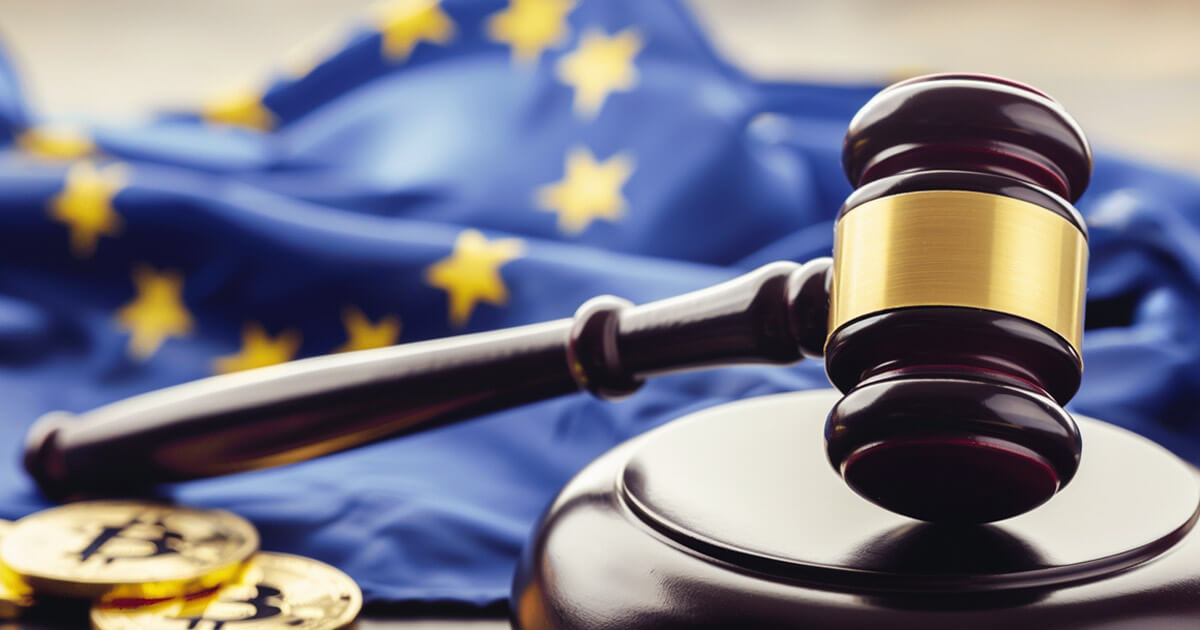Regulation
Here’s how MiCA regulation will impact the European cryptocurrency market

The following is a guest post by Mike Romanenko, CVO and co-founder of Kyrrex.
The European crypto landscape is set to undergo a major transformation with the introduction of the Markets in Crypto Assets (MiCA) regulation. Mike Romanenko, CVO and co-founder of Kyrrex, predicts that this regulation will present multiple opportunities and challenges for crypto players in European countries.
Expected changes after MiCA adoption
THE Adoption of MiCA The entry into force of the new regulations in European countries marks a radical change for the cryptocurrency industry. For market participants, these regulations introduce strict rules governing various facets of the industry, including cryptocurrency exchanges, custody of funds, and customer verification processes. While these rules may seem quite restrictive at first, they are designed to improve the security and transparency of cryptocurrency operations.
Most importantly, one of MiCA’s primary goals is to protect end users by ensuring that companies adhere to transparent auditing practices and maintain verifiable reserves. This need for transparency has become particularly evident after the many bankruptcies of large crypto companies since 2020, including FTX Crashwhich exposed vulnerabilities and risks within the sector.
I believe that regulation will facilitate the entry of institutional investors into the cryptocurrency market. By establishing clear and consistent rules, MiCA can help attract significant institutional and corporate funds, thereby strengthening the liquidity and stability of the market. The situation reflects the introduction of Bitcoin ETF in the United States, which allowed institutional investors to gain exposure to Bitcoin through regulated financial products.
The challenge of implementation
Despite the long-term benefits, I didn’t expect the initial phase of MiCA implementation to be easy. Europe currently has around 2,000 virtual asset service providers (VASPs), many of which are in no rush to comply with the upcoming regulations. Local authorities will face considerable pressure to review and approve applications quickly, which could lead to potential backlogs and operational delays.
Some countries, such as Malta and France, have already started to align their regulations with MiCA, but the overall level of preparedness varies considerably across Europe. I expect this disparity to lead to a period of confusion and disruption as businesses work to comply with the new standards.
The entire process is planned to last three years, from June 2023 to July 2026, and includes the following steps:
- Entry into force of MiCA (June 2023).
- Deadline to waive the grandfather clause or reduce the duration (June 2024).
- Entry into force of MiCA (December 2024).
- End of the transitional phase (July 2026).
MiCA has the potential to have a significant impact on the cryptocurrency market within the EU. I would like to highlight the following expected effects:
- Enhanced consumer protection. The aim of MiCA is to establish clear rules for crypto-assets, providing better protection for investors.
- Greater market integrity. By establishing governance standards, MiCA aims to promote fair competition and prevent market abuse.
- Simplified cross-border operations. A harmonised regulatory ecosystem will make it easier for EU businesses to operate across borders.
- Stimulating innovations. The pilot scheme for distributed ledger technology (DLT) market infrastructures could lead to more efficient blockchain-based financial systems.
I would say that the key aspect of MiCA is the new classification of crypto-assets, known as CASP: crypto-asset service providers. It includes exchanges, custodian wallet providers and trading platforms, which will be subject to authorisation by national authorities. The classification aims to ensure that all entities providing crypto services comply with the same regulations.
Regulatory Challenges and Opportunities in the United States and Other Countries
Unlike Europe, the United States does not have a unified regulatory framework for cryptoassets, leading to significant uncertainty. While Bitcoin is classified as a commodity, the status of other digital assets, such as Ethereum, remains ambiguous. Despite what I wanted to see, this lack of clarity complicates compliance and increases the risk of regulatory action against crypto businesses.
There are, however, many positive developments. The introduction of money transmitter licenses (MTLs) for cryptocurrency exchanges has allowed companies to operate legally in several states. Full federal regulation is still pending and is unlikely to be addressed before the next election.
Hopefully, the implementation of MiCA in Europe can serve as a valuable model for other regions, including the US, UK, Turkey, and India. I would like to see that in countries like India, where cryptocurrencies are currently banned, a MiCA-inspired regulatory framework could pave the way for legalized and secure crypto operations. Similarly, Turkey has faced significant challenges with unregulated exchanges, leading to substantial losses for investors. Who would have thought that adopting a structured regulatory approach could mitigate these risks and foster a healthier crypto ecosystem?
At the forefront of cryptocurrency regulation and compliance
Here are some aspects of how leaders are advocating smart cryptocurrency regulation to reshape the European cryptocurrency market:
- Commitment to transparency. Regulated and compliant entities leverage blockchain technology within their centralized infrastructure, improving transparency and efficiency. This approach is evident in the implementation of blockchain technology in internal transactions. Such integrations ensure that all transactions are traceable and secure, in line with the rigorous standards expected of regulated businesses.
- Rigorous monitoring of compliance. A key aspect of regulatory compliance is the monitoring system. It includes internal compliance teams and external auditors who conduct biannual reviews to ensure compliance with all regulatory requirements. One of the notable features of the compliance infrastructure is the live audit log server. It records all actions within the system, especially those in the back office, providing 24/7 access to external authorities for real-time monitoring. This system ensures that any irregularities are quickly identified and addressed, reinforcing the company’s commitment to transparency and security.
- Preparing for the future through strategic investments. Strategic investments must go beyond compliance and focus on integrating new technologies. By staying in tune with current market trends, companies seek to integrate the latest advancements into their ecosystem. This approach not only improves their service offering, but also keeps them at the forefront of industry developments.
- Extension of regulatory licenses. The firms are working to obtain additional regulatory licenses to expand their service offerings. One of their goals is to acquire the Markets in Financial Instruments Directive (MiFID) license, which allows them to offer regulated derivatives trading in Europe. This move is poised to fill a significant gap in the market, providing a transparent and compliant platform for futures and perpetual trading.
- Adapting to the global market. Beyond Europe, companies are also looking to the US market, despite current regulatory uncertainties. By securing money transmitter licenses (MTLs) in several states, they plan to strategically expand their presence in the US. This expansion underscores their commitment to navigating complex regulatory environments to offer secure and compliant services globally.
- Innovating for the future. The long-term vision includes the development of a comprehensive financial super app, integrating a wide range of services within a single platform. The companies aim to leverage blockchain technology to reduce transaction fees and improve the overall user experience, further driving adoption.
Conclusion
The implementation of MiCA represents an important step towards establishing a safe and transparent crypto market in Europe. While I expect the transition to be difficult, the long-term benefits of enhanced regulation, increased institutional investment, and greater market stability are substantial.
Furthermore, MiCA’s regulatory framework could serve as a model for other regions looking to effectively regulate their cryptocurrency markets. As the global cryptocurrency industry continues to evolve, lessons learned from Europe’s regulatory journey will be invaluable in shaping the future of digital assets around the world.
As the cryptocurrency industry continues to mature, the importance of strong regulatory compliance cannot be overstated.
Regulation
Crypto community gets involved in anti-government protests in Nigeria

Amid the #EndBadGovernanceInNigeria protests in Nigeria, a notable shift is occurring within the country’s cryptocurrency sector. As the general public demands sweeping governance reforms, crypto community leaders are seizing the opportunity to advocate for specific regulatory changes.
Rume Ophi, former secretary of the Blockchain Stakeholders Association of Nigeria (SiBAN), stressed the critical need to integrate crypto-focused demands into the broader agenda of the protests.
Ophi explained the dual benefit of such requirements, noting that proper regulation can spur substantial economic growth by attracting investors and creating job opportunities. Ophi noted, “Including calls for favorable crypto regulations is not just about the crypto community; it’s about leveraging these technologies to foster broader economic prosperity.”
Existing government efforts
In opposition to Ophi’s call for action, Chimezie Chuta, chair of the National Blockchain Policy Steering Committee, presents a different view. He pointed out The Nigerian government continued efforts to nurture the blockchain and cryptocurrency industries.
According to Chuta, the creation of a steering committee was essential to effectively address the needs of the crypto community.
Chuta also highlighted the creation of a subcommittee to harmonize regulations for virtual asset service providers (VASPs). With the aim of streamlining operations and providing clear regulatory direction, the initiative involves cooperation with major organizations including the Securities and Exchange Commission (SEC) and the Central Bank of Nigeria (CBN). “Our efforts should mitigate the need for protest as substantial progress is being made to address the needs of the crypto industry,” Chuta said.
A united call for support
The ongoing dialogue between the crypto community and government agencies reflects a complex landscape of negotiations and demands for progress.
While actors like Ophi are calling for more direct action and the inclusion of crypto demands in protest agendas, government figures like Chuta are advocating for recognition of the steps already taken.
As protests continue, the crypto community’s push for regulatory reform highlights a crucial aspect of Nigeria’s broader fight to improve governance and economic policies. Both sides agree that favorable regulations are critical to the successful adoption and implementation of blockchain technologies, signaling a potentially transformative era for Nigeria’s economic framework.
Read also : OKX Exchange Exits Nigerian Market Amid Regulatory Crackdown
Regulation
Cryptocurrency Regulations in Slovenia 2024

Slovenia, a small but highly developed European country with a population of 2.1 million, boasts a rich industrial history that has contributed greatly to its strong economy. As the most economically developed Slavic nation, Slovenia has grown steadily since adopting the euro in 2007. Its openness to innovation has been a key factor in its success in the industrial sector, making it a prime destination for cryptocurrency enthusiasts. Many believe that Slovenia is poised to become a powerful fintech hub in Europe. But does its current regulatory framework for cryptocurrencies support such aspirations?
Let’s explore Slovenia’s cryptocurrency regulations and see if they can propel the country to the forefront of the cryptocurrency landscape. My expectations are positive. What are yours? Before we answer, let’s dig a little deeper.
1. Cryptocurrency regulation in Slovenia: an overview
Slovenia is renowned for its innovation-friendly stance, providing a supportive environment for emerging technologies such as blockchain and cryptocurrencies. Under the Payment Services and Systems Act, cryptocurrencies are classified as virtual assets rather than financial or monetary instruments.
The regulation of the cryptocurrency sector in Slovenia is decentralized. Different authorities manage different aspects of the ecosystem. For example, the Bank of Slovenia and the Securities Market Agency oversee cryptocurrency transactions to ensure compliance with financial laws, including anti-money laundering (AML) and terrorist financing regulations. The Slovenian Act on the Prevention of Money Laundering and Terrorist Financing (ZPPDFT-2) incorporates the EU’s 5th Anti-Money Laundering Directive (5MLD) and aligns with the latest FATF recommendations. All virtual currency service providers must register with the Office of the Republic of Slovenia.
2. Cryptocurrency regulation in Slovenia: what’s new?
Several notable developments have taken place this year in the cryptocurrency sector in Slovenia:
July 25, 2024:Slovenia has issued a €30 million on-chain digital sovereign bond, the first of its kind in the EU, with a yield of 3.65%, maturing on 25 November 2024.
May 14, 2024:NiceHash has announced the first Slovenian Bitcoin-focused conference, NiceHashX, scheduled for November 8-9 in Maribor.
3. Explanation of the tax framework for cryptocurrencies in Slovenia
The Slovenian cryptocurrency tax framework provides clear guidelines for individuals and businesses. According to the Slovenian Financial Administration, the tax treatment depends on the status of the trader and the nature of the transaction.
- People:Income earned from cryptocurrencies through employment or ongoing business activities is subject to personal income tax. However, capital gains from transactions or market fluctuations are exempt from tax.
- Companies:Capital gains from cryptocurrency-related activities are subject to a 19% corporate tax. Value-added tax (VAT) generally applies at a rate of 22%, although cryptocurrency transactions that are considered as means of payment are exempt from VAT. Companies are not allowed to limit payment methods to cryptocurrencies alone. Tokens issued during ICOs must follow standard accounting rules and corporate tax law.
4. Cryptocurrency Mining in Slovenia: What You Need to Know
Cryptocurrency mining is not restricted in Slovenia, but income from mining is considered business income and is therefore taxable. This includes rewards from validating transactions and any additional income from mining operations. Both individuals and legal entities must comply with Slovenian tax regulations.
5. Timeline of the development of cryptocurrency regulation in Slovenia
Here is a timeline highlighting the evolution of cryptocurrency regulations in Slovenia:
- 2013:The Slovenian Financial Administration has issued guidelines stating that income from cryptocurrency transactions should be taxed.
- 2017:The Slovenian Financial Administration has provided more detailed guidelines on cryptocurrency taxation, depending on factors such as the status of the trader and the type of transaction.
- 2023:The EU adopted the Markets in Crypto-Assets (MiCA) Regulation, establishing a uniform regulatory framework for crypto-assets, their issuers and service providers across the EU.
Endnote
Slovenia’s approach to the cryptocurrency sector is commendable, reflecting its optimistic view of the future of cryptocurrencies. The country’s balanced regulatory framework supports cryptocurrency innovation while protecting users’ rights and preventing illegal activities. Recent developments demonstrate Slovenia’s commitment to continually improving its regulatory environment. Slovenia’s cryptocurrency regulatory framework sets a positive example for other nations navigating the evolving cryptocurrency landscape.
Read also : Hong Kong Cryptocurrency Regulations 2024
Regulation
A Blank Sheet for Cryptocurrencies: Kamala Harris’ Regulatory Opportunity

photo by Shubham Dhage on Unsplash
As the cryptocurrency landscape continues to evolve, the need for clear regulation has never been more pressing.
With Vice President Kamala Harris now leading the charge on digital asset regulation in the United States, this represents a unique opportunity to start fresh. This fresh start can foster innovation and protect consumers. It can also pave the way for widespread adoption across industries, including real estate agencies, healthcare providers, and online gaming platforms like these. online casinos ukAccording to experts at SafestCasinoSites, these platforms come with benefits such as bonus offers, a wide selection of games, and various payment methods. Ultimately, all this increase in adoption could propel the cryptocurrency market forward.
With this in mind, let’s look at the current state of cryptocurrency regulation in the United States, a complex and confusing landscape. Multiple agencies, including the Securities and Exchange Commission (SEC), the Commodity Futures Trading Commission (CFTC), and the Financial Crimes Enforcement Network (FinCEN), have overlapping jurisdictions, creating a fragmented regulatory environment. This lack of clarity has stifled innovation as companies are reluctant to invest in the United States, fearing regulatory repercussions. A coherent and clear regulatory framework is urgently needed to realize the full potential of cryptocurrencies in the United States.
While the US struggles to find its footing, other countries, such as Singapore and the UK, are actively looking into the cryptocurrency sector by adopting clear and supportive regulatory frameworks. This has led to a brain drain, with companies choosing to locate in more conducive environments.
Vice President Kamala Harris has a unique opportunity to change that narrative and start over. Regulation of cryptocurrencies. By taking a comprehensive and inclusive approach, it can help create a framework that balances consumer protection with innovation and growth. The time has come for clear and effective regulation of cryptocurrencies in the United States.
Effective regulation of digital assets is essential to foster a safe and innovative environment. The key principles guiding this regulation are clarity, innovation, global cooperation, consumer protection, and flexibility. Clear definitions and guidelines eliminate ambiguity while encouraging experimentation and development to ensure progress. Collaboration with international partners establishes consistent standards, preventing regulatory arbitrage. Strong safeguards protect consumers from fraud and market abuse, and adaptability allows for evolution in response to emerging trends and technologies, striking a balance between innovation and protection.
The benefits of effective cryptocurrency regulation are multiple and far-reaching. By establishing clear guidelines, governments can attract investors and mainstream users, driving growth and adoption. This can, in turn, position countries like the United States as global leaders in fintech and innovation. Strong safeguards will also increase consumer confidence in digital assets and related products, increasing economic activity.
A thriving crypto industry can contribute significantly to GDP and job creation, which has a positive impact on the overall economy. Furthermore, effective regulation has paved the way for the growth of many businesses such as tech startups, online casinos, and pharmaceutical companies, demonstrating that clear guidelines can open up new opportunities without stifling innovation. This is a great example of how regulation can allay fears of regressive policies, even if Kamala Harris does not repeal the current progressive approach. By adopting effective regulation, governments can create fertile ground for the crypto industry to thrive, thereby promoting progress and prosperity.
Regulation
South Korea Imposes New ‘Monitoring’ Fees on Cryptocurrency Exchanges

Big news! The latest regulatory changes in South Korea are expected to impact major cryptocurrency exchanges like Upbit and Bithumb. Under the updated regulations, these platforms will now have to pay monitoring fees, which could cause problems for some exchanges.
Overview of new fees
In the latest move to regulate cryptocurrencies, the Financial Services Commission announced on July 1 the revised “Enforcement Order of the Act on the Establishment of the Financial Services Commission, etc.” update “Regulations on the collection of contributions from financial institutions, etc.” According to local legislation newsThe regulations require virtual asset operators to pay supervisory fees for inspections conducted by the Financial Supervisory Service starting next year. The total fees for the four major exchanges are estimated at around 300 million won, or about $220,000.
Apportionment of costs
Upbit, which holds a dominant market share, is expected to bear more than 90% of the total fee, or about 272 million won ($199,592) based on its operating revenue. Bithumb will pay about 21.14 million won ($155,157), while Coinone and GOPAX will contribute about 6.03 million won ($4,422) and 830,000 won ($608), respectively. Korbit is excluded from this fee due to its lower operating revenue.
Impact on the industry
The supervision fee will function similarly to a quasi-tax for financial institutions subject to inspections by the Financial Supervisory Service. The new law requires any company with a turnover of 3 billion won or more to pay the fee.
In the past, fees for electronic financial companies and P2P investment firms were phased in over three years. However, the taxation of virtual asset operators has been accelerated, reflecting the rapid growth of the cryptocurrency market and increasing regulatory scrutiny.
Industry reactions
The rapid introduction of the fee was unexpected by some industry players, who had expected a delay. Financial Supervisory Service officials justified the decision by citing the creation of the body concerned and the costs already incurred.
While larger exchanges like Upbit and Bithumb can afford the cost, smaller exchanges like Coinone and GOPAX, which are currently operating at a loss, could face an additional financial burden. This is part of a broader trend of declining trading volumes for South Korean exchanges, which have seen a 30% drop since the new law went into effect.
-

 Regulation12 months ago
Regulation12 months agoRipple CTO and Cardano founder clash over XRP’s regulatory challenges ⋆ ZyCrypto
-

 Regulation10 months ago
Regulation10 months agoNancy Pelosi Considers Supporting Republican Crypto Bill FIT21 – London Business News
-

 Videos11 months ago
Videos11 months agoCryptocurrency News: Bitcoin, ETH ETF, AI Crypto Rally, AKT, TON & MORE!!
-

 Regulation11 months ago
Regulation11 months agoBitcoin’s future is ‘bleak’ and ripe for regulation, says lead developer
-

 News9 months ago
News9 months agoAave Price Increases Following Whales Accumulation and V3.1 Launch
-

 Regulation9 months ago
Regulation9 months agoSouth Korea Imposes New ‘Monitoring’ Fees on Cryptocurrency Exchanges
-

 Regulation9 months ago
Regulation9 months agoA Blank Sheet for Cryptocurrencies: Kamala Harris’ Regulatory Opportunity
-

 Regulation9 months ago
Regulation9 months agoCryptocurrency Regulations in Slovenia 2024
-

 News11 months ago
News11 months agoThe trader earned $46 million with PEPE after reaching a new ATH
-

 Regulation11 months ago
Regulation11 months agoCrypto needs regulation to thrive: Tyler Cowen
-

 Blockchain11 months ago
Blockchain11 months agoSolana ranks the fastest blockchain in the world, surpassing Ethereum, Polygon ⋆ ZyCrypto
-

 Blockchain11 months ago
Blockchain11 months agoSolana Surpasses Ethereum and Polygon as the Fastest Blockchain ⋆ ZyCrypto





